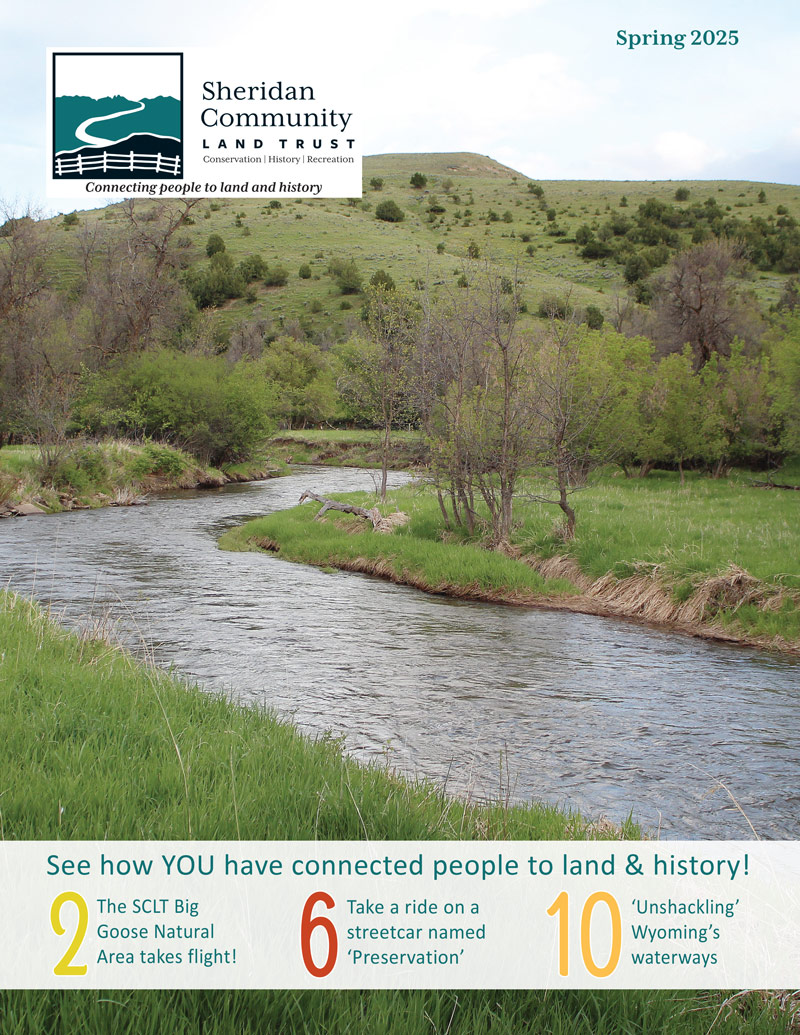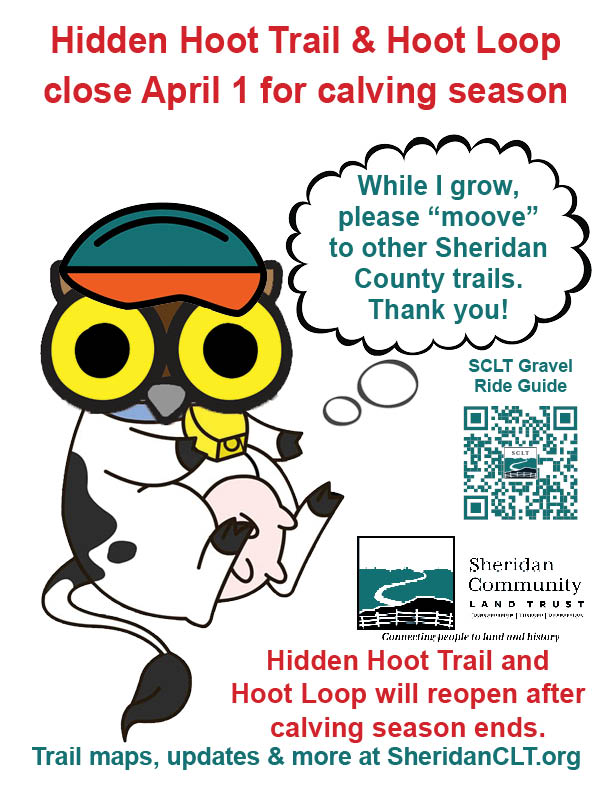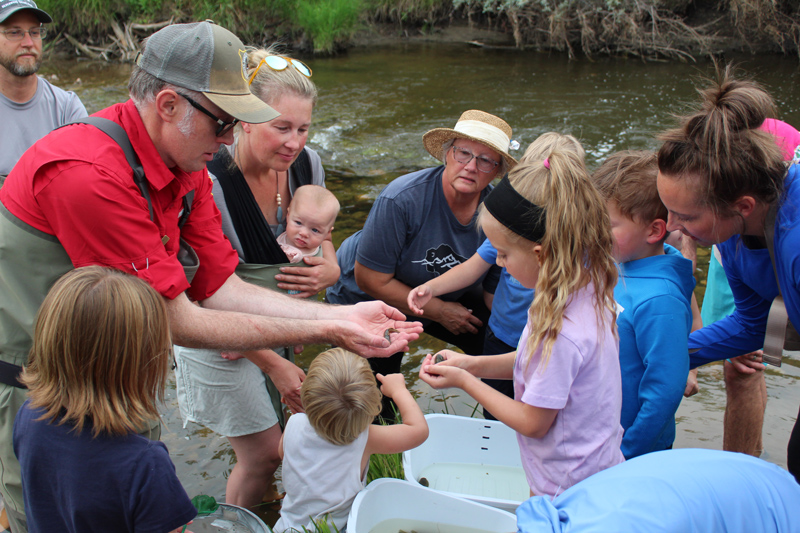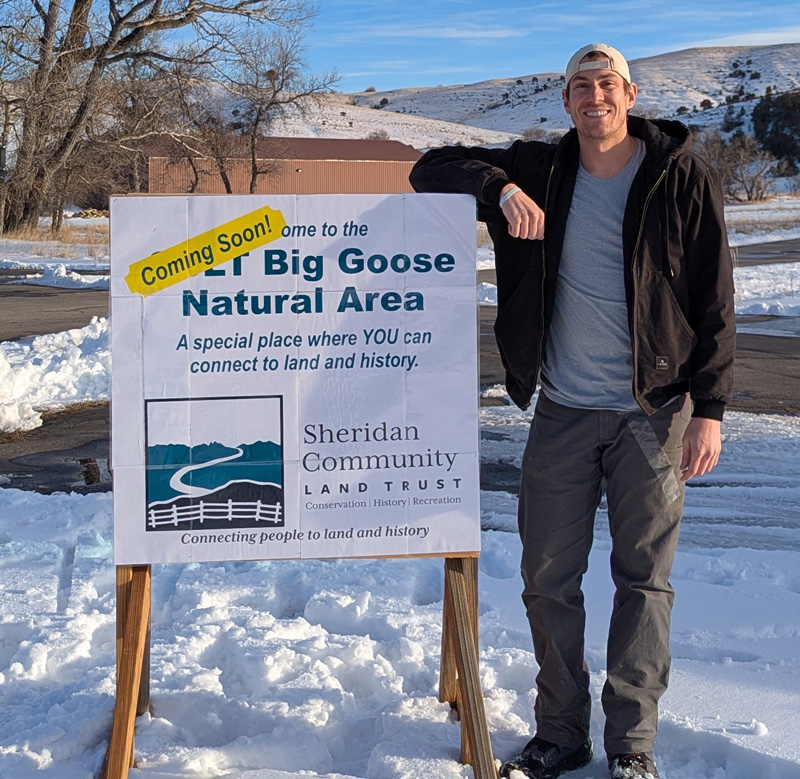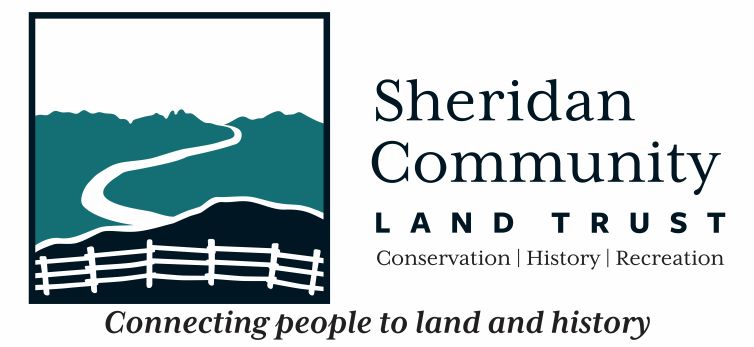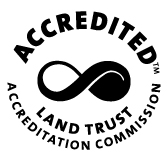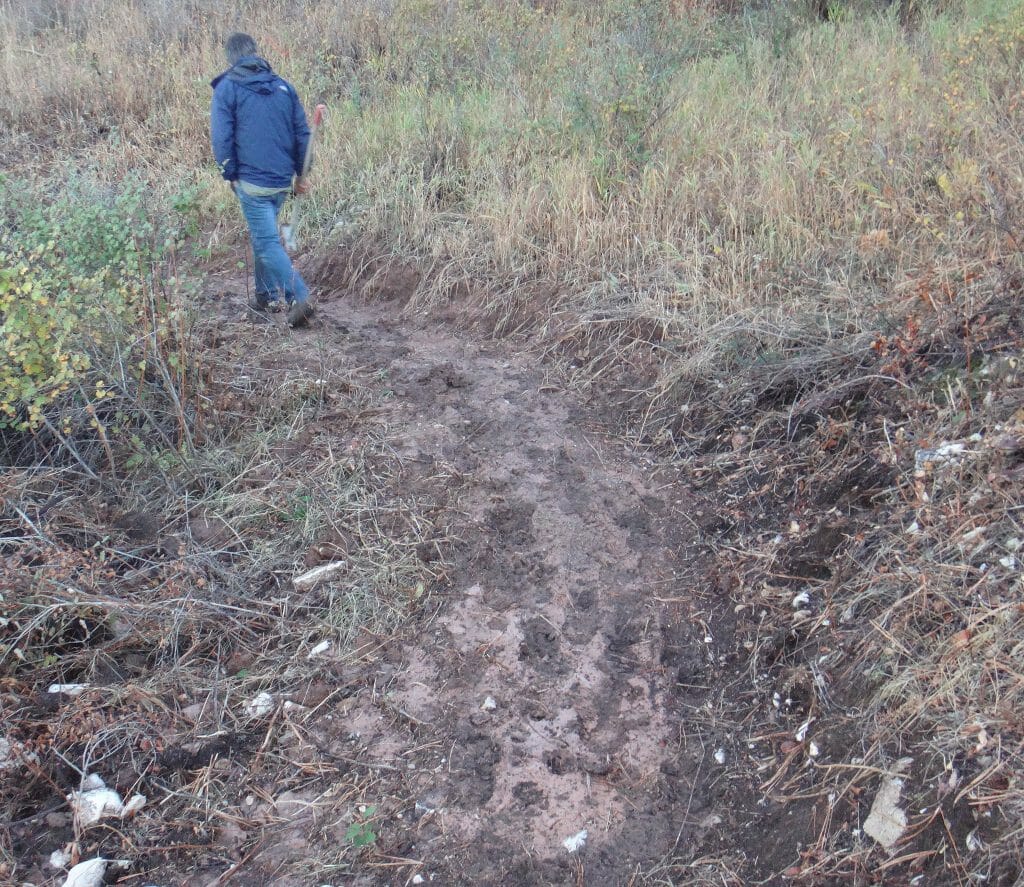
Picture this: It’s one of the first fine days of spring, the sun’s shining bright with a bluebird sky, the mercury’s touching 60, and you’re stuck sitting at your desk staring at the computer screen tap, tap, tapping away at the keys searching words that just don’t seem to come, all the while you’re staring at the clock as the seconds turn to minutes and minutes turn to hours – forever in a day while you’re champing at the bit to hit Highway 335 and get to Red Grade Trails and Scout’s Bluff to scout for the first Glacier Lilies and Pasque Flowers poking up out of the south-facing slopes that the sun’s shining bright upon because of that bluebird sky and the mercury touching 60. Finally, the clock strikes five and you’re blowing through Big Horn, tires squealing as you’re hugging the inside bend of the Brinton Museum turn and heading on up the hill to the parking lot at Base Trailhead. The birds are singing, the bees are buzzing, the aroma of Wyoming spring fills the air. But when you get there, the gate doesn’t say “Welcome to Wonderland,” it says, “Trail Closed Due to Muddy Conditions.” You let out a big sigh, say a few choice words to the sign that can’t answer back; deflated, you sulk back home and queue an old episode of Nitro on the WWE Network to salve your spirits.
Sound familiar?
There are few feelings worse than not being able to enjoy exploring Red Grade Trails or The Classic Soldier Ridge Trail on a gorgeous spring day. Unfortunately, ‘tis the season for frustration as, after a long winter, Mud Season is finally here.
And with it, many challenges as trail conditions change just as quickly as the sun can turn to storm here at the base of the Bighorns. “The soil seems alive this time of year. What’s dry one hour or one day can be a muddy mess the next,” related Sheridan Community Land Trust Trails Manager Tami Sorenson. “Trail users need to be aware that conditions come and go as the sun, the temperature, and the frost in the soil all partake in an invisible dance on and below the surface. It’s also a time when nature chooses to drench us most. And unlike summer where it dries out quickly, the ground is saturated and can’t dry up as fast as we’d like it to.”
And because of that, trails can get damaged quickly. That groove left behind by a bike tire is a channel for water, and can go from groove to gully to chasm to canyon in a single deluge. Sorenson said bike ruts aren’t the only challenge, so are holes from hikers’ shoes. Ruts and holes often cause users to veer off the trail, which causes even more harm.
“Ruts and holes catch tires and toes, so users naturally avoid troubled spots. The result is side trails that destroy the critical edge of the original trail, and take a bit of the environment with them,” Sorenson noted, saying it’s incumbent upon users to “keep single track single.”
So, what should someone do when they want to hit the trail but don’t want the trail to turn into “anudder mudder?” Sorenson said users should turn around and not use a trail if any of these three things occur: 1) If mud is sticking to your shoes or tires. 2) If you’re on a bike and you’re leaving a long, snake-like trail behind you, or 3) If your shoes are punching deep holes in the trail.
“A trail can be a little tacky, or a little slimy on the surface, and it’s still OK,” she explained, and pointed out that appropriate footwear is a must. “Assume you’ll be encountering puddles, mud holes, drifts, and ice patches. This time of year, it’s guaranteed.”
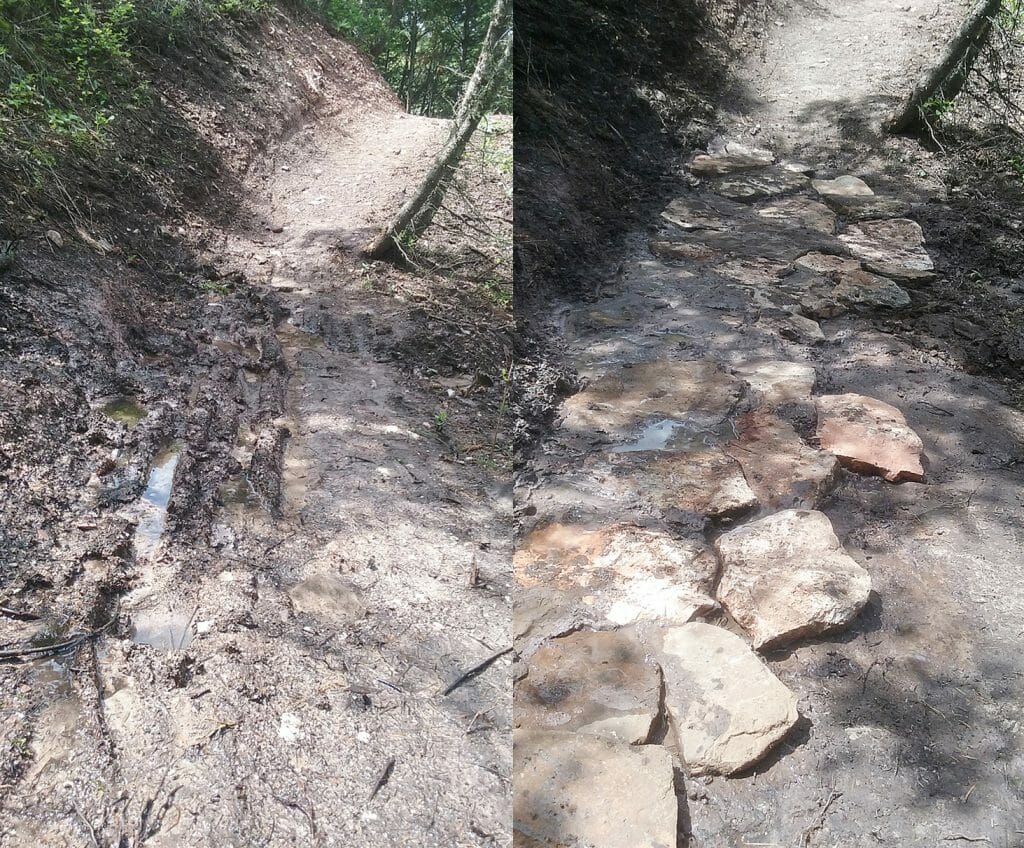
And when you inevitably encounter those mud holes, Sorenson said, “Be like a kid and go straight through. This prevents widening of the trail, compacting the soil, trampling the plants, and all the negative stuff that makes a trail bad.”
If you happen to do some damage, she suggested stopping for a minute or two to smooth it out or stomp it down, which may help prevent tons of damage down the road. “One rut from one bike, or one set of deep holes from one hiker, can take hours, if not days, to repair.”
It’s tremendously helpful volunteers who wind up spending those hours and days repairing those ruts and holes. It makes them angry when they spend their time fixing damage caused by careless trail users – and you won’t like encountering volunteers when they’re angry.
“They carry long, sharp objects; you don’t want to tick them off!” Sorenson joked. “Show a bit of love to a volunteer and don’t do wet trails.”
Thanks to the marvels of modern technology, you needn’t worry about riling up a mob of volunteers wielding pitchforks, because Sheridan Community Land Trust has created a tool for you – it’s a Facebook group called “Sheridan Trail Conditions.” The goal? Know before you go.
“You no longer have to wonder what the conditions are, or worse, arrive at a trailhead only to have to turn around,” Sorenson said. The group encourages people using trails in Sheridan County to share updates about, well…Sheridan trail conditions. “A click of a button and maybe someone out there will have made your decision easy.”
It’s something that’s working for trail systems across the country, so she thought it’d work well in Sheridan. Sorenson said she hopes folks will post pictures enjoying the trails; she’s also hopeful they’ll post pics of spots which need a little TLC.
“This essentially gives us hundreds of eyes and ears,” Sorenson related. “Anyone can be a reporter. One photo, one sentence will help everyone know what it’s like out there, and it’ll give us the heads up on any areas that might need attention.”
Sheridan Trails Conditions isn’t just for SCLT’s trails. People are encouraged to share what it’s like in Tongue Canyon, at Penrose and South Piney, up in the forest – even along the Sheridan Pathways.
While Mud Season can be frustrating at times, Sorenson was quick to say that doesn’t mean people should just stay home. “Not all trails are created equal and whether a trail is good to go or not is never cut and dry. I have a saying, ‘Can’t call it from the couch.’”
Except, now you can. But only if you join the “Sheridan Trail Conditions” group on Facebook. That way, the next time the sun is shining bright with a bluebird sky and the mercury’s touching 60, you won’t have to sulk home to another Nitro of WWE Network because you’ll know before you go!

